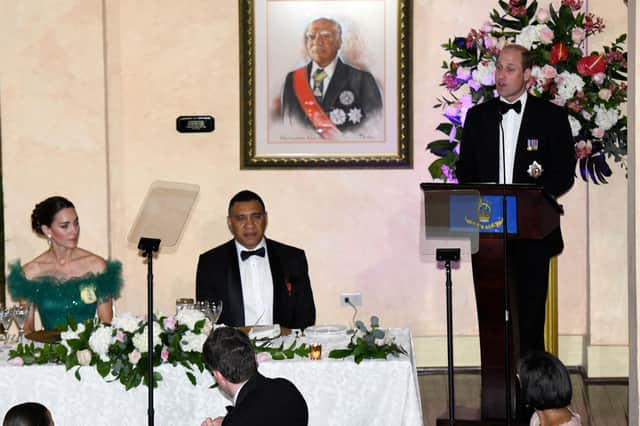Slavery: Edinburgh needs to understand how it benefited from the profits of this evil trade – Susan Dalgety


Instead he expressed his “profound sorrow” and said “slavery was abhorrent and it never should have happened”.
And he told his audience, which included the Jamaican Prime Minister, Andrew Holdness, that he strongly agreed with his father, the Prince of Wales, who said in Barbados last year that “the appalling atrocity of slavery forever stains our history”.
Advertisement
Hide AdAdvertisement
Hide AdThere are reminders of slavery everywhere in Edinburgh, from Henry Dundas, 1st Viscount Melville, who towers over St Andrew’s Square, to Bute House, the First Minister’s official residence in Charlotte Square.
Dundas, as Home Secretary and later Secretary of State for War, was instrumental in delaying an end to the transatlantic slave trade by several years. And one of the first residents of Bute House was John Innes Crawford, who was born in Jamaica and inherited a sugar plantation with several hundred enslaved people when he was a child.
Scotland’s wealth was built, in large part, on the transatlantic slave trade which saw millions of people stolen from Africa and enslaved in North America and the Caribbean.
About a third of the slave plantations in the Caribbean were owned by Scots, and the wealth generated by the export of sugar, coffee, cotton and tobacco transformed central Edinburgh, as well as Glasgow and Dundee.
Advertisement
Hide AdAdvertisement
Hide AdWe can’t reach back into our past and change what happened, nor will our profound sorrow atone for the sins of slavery, but we do have a responsibility to understand our city’s past.
Lisa Williams, founder of the Edinburgh Caribbean Association, hosts regular walking tours to learn more about the city’s role in slavery. The next one is on Saturday, April 2.
But you don’t need to join Lisa to find out more about our city’s links to slavery. Simply google ‘Edinburgh and slave trade’ and you will find lots of information charting the history of that terrible period.
And, crucially, we need to be aware that today slavery remains a fact of life, even here in Scotland, where the latest government figures show that, in 2020, nearly 400 people were potential victims. Some, no doubt, here in our city. This is also a matter of profound sorrow.
A message from the Editor:
Thank you for reading this article. We're more reliant on your support than ever as the shift in consumer habits brought about by coronavirus impacts our advertisers.
If you haven't already, please consider supporting our trusted, fact-checked journalism by taking out a digital subscription.
Comment Guidelines
National World encourages reader discussion on our stories. User feedback, insights and back-and-forth exchanges add a rich layer of context to reporting. Please review our Community Guidelines before commenting.
